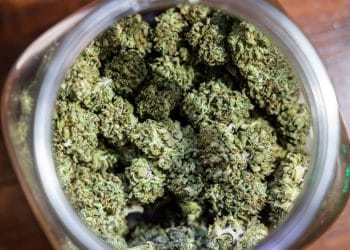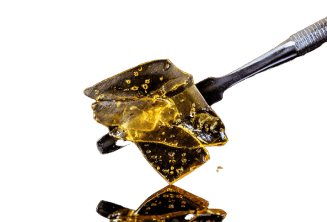Humankind has an extensive history of extraction, with the method being used as far back as ancient Egypt. [1] For centuries humans have been utilizing basic herbal medicine extraction techniques. Still, extraction methods became more refined in the early 70s and 80s. Supercritical CO2 extraction technologies became widely used in the food industry during this time, with the technology first applied to remove caffeine from coffee beans.
Despite what some might have been led to believe, supercritical CO2 extraction using carbon dioxide supercritical fluid is still very much present across multiple industries today, including the cannabis industry. [2] In fact, for many growers in the therapeutic hemp and medicinal cannabis industries, making extracts has become a favored process. In our article, we’ve discussed the basics of supercritical carbon dioxide extracts to help you understand this process and its importance.
What Is Supercritical CO2 Extraction?
Supercritical CO2 fluid extraction is a process that allows to extract the desired compounds from cannabis plant material selectively. [3] Unlike other methods of extraction, supercritical CO2 extraction offers numerous advantages. [4]
CO2 at the supercritical state exhibits the properties of both a gas and a liquid. In this state, CO2 can penetrate better plant matrices, dissolving and extracting desired compounds.
The extraction process involves pressurizing carbon dioxide in a closed loop system to reach its supercritical state. The solvent will flow in the extraction chamber and will penetrate in the plant material dissolving the desired compounds. The final extract will be collected in a separate chamber and the solvent once separated from the plant material, recondenses back in the solvent tank, ready to be used again in another extraction cycle.
Cannabis Supercritical CO2 Extraction Process
Now that you know more about this method, we can delve deeper into how this process is enacted. [5] Have a look below to learn more about this technique small growers and industrial labs are utilizing. [6]
- The first step involves the cannabis plant material being loaded into an extraction vessel. This is then pressurized to reach the supercritical parameters of carbon dioxide;
- Once pressurized, the temperature is adjusted to maintain the CO2 supercritical state;
- The supercritical CO2 is introduced into the extraction vessel during the third step. Once in this vessel, the solvent permeates the plant material and dissolves the desired compounds;
- This mixture is passed into a separator, where the pressure is released, and the supercritical CO2 reverts to the gas state.
The extracted cannabis compounds separate from the CO2 and can be collected. The solvent isn’t immediately discarded but recycled for further use, minimizing waste and reducing environmental impact.
Advantages of supercritical CO2 cannabis extraction
Few of the benefits performing cannabis extraction using supercritical CO2 are listed below, to better explain why this method become a favored choice by cannabis growers:
- Solvent free extracts: this method of extraction ensures that no residual solvents are present in the final product. In fact CO2 at atmospheric pressure is a gas and doesn’t leave traces in the extract;
- Selective extraction: allows the targeted isolation of specific compounds, such as cannabinoids or terpenes, while leaving behind unwanted components like chlorophyll and waxes;
- Safe process: it is a safer alternative to traditional extraction methods, as CO2 is non-toxic and non-flammable. This means that this extraction technique reduces the potential for health and safety risks commonly associated with cannabis extraction processes.
Applications of supercritical CO2 extraction in the cannabis industry
- Ensures high-quality extracts: it is commonly employed in producing cannabis concentrates, such as oils, tinctures, etc, which are widely used for medicinal and recreational purposes;
- Environmentally friendly: this extraction method is clean, safe, and cost-effective, making it sustainable and eco-friendly; [7]
- Assists with terpene isolation: due to the relatively low extraction temperatures the method permits the isolation of thermolabile molecules such as cannabis terpenes among others;
- Helps with high-quality yields: the versatility and efficiency of supercritical carbon dioxide extraction make it a preferred method for ensuring high-quality yields. [8]
The disadvantages of supercritical carbon dioxide extraction
- High initial investment: it is required for specialized equipment and infrastructure for those who want to use this extraction method. This can make it hard for growers to use this technique, especially if they grow cannabis on a small scale;
- Skilled operators: the complexity of the extraction process requires skilled operators and technical expertise. These skilled professionals are not always readily available and can be expensive to hire;
- Risk of degraded terpenes: while performing CO2 extraction, temperature and pressure parameters require careful optimization to avoid degrading heat-sensitive cannabinoids or terpenes. If the parameters are not followed, there is a risk of degrading thermolabile molecules.
Wrap-Up On The Basics Of Supercritical CO2 Extracts For Cannabis
Ultimately, supercritical carbon dioxide extraction has revolutionized the cannabis industry by offering a safe, selective, and efficient method for extracting valuable compounds from cannabis plant material. Understanding the basics of supercritical CO2 extracts is essential for researchers in the cannabis industry to harness the full potential of this extraction method.
References:
- Magazine, S. (2022, December 27). Fourteen discoveries made about human evolution in 2022. Smithsonian.com.
- Supercritical CO2 Tech Team. Energy.gov. (n.d.).
- CO2 Supercritical Extract Guide. AromaWeb. (n.d.).
- Carbon dioxide supercritical extraction. Carbon Dioxide Supercritical Extraction – an overview | ScienceDirect Topics. (n.d.).
- The process and chemistry behind Supercritical CO2 Extraction. Analytical Cannabis. (n.d.).
- Author links open overlay panelLaura J. Rovetto a b, a, b, AbstractCannabis sativa L. extracts with high concentration of Δ9-tetrahydrocannabinolic acid (THCA) and Δ9-tetrahydrocannabinol (THC) were obtained by supercritical carbon dioxide (CO2) extraction. The objective of this work was to investigate the cannab, ElSohly, M. A., Hartsel, J. A., Amar, M. B., Walsh, Z., Baker, D., Hollister, L., Reverchon, E., Herrero, M., Melo, M. M. R. de, Aladić, K., Porto, C. D., Hong, S., Tomita, K., Perrotin-Brunel, H., & Ambach, L. (2017, March 19). Supercritical carbon dioxide extraction of cannabinoids from Cannabis Sativa L. The Journal of Supercritical Fluids.
- Rochfort, S., Isbel, A., Ezernieks, V., Elkins, A., Vincent, D., Deseo, M. A., & Spangenberg, G. C. (2020, June 4). Utilisation of design of Experiments Approach to optimise supercritical fluid extraction of Medicinal Cannabis. Scientific reports.
- Steinert, M. (2019, November 1). Understanding Supercritical Carbon Dioxide (CO2) extraction. Cole.
Updated July 2023












